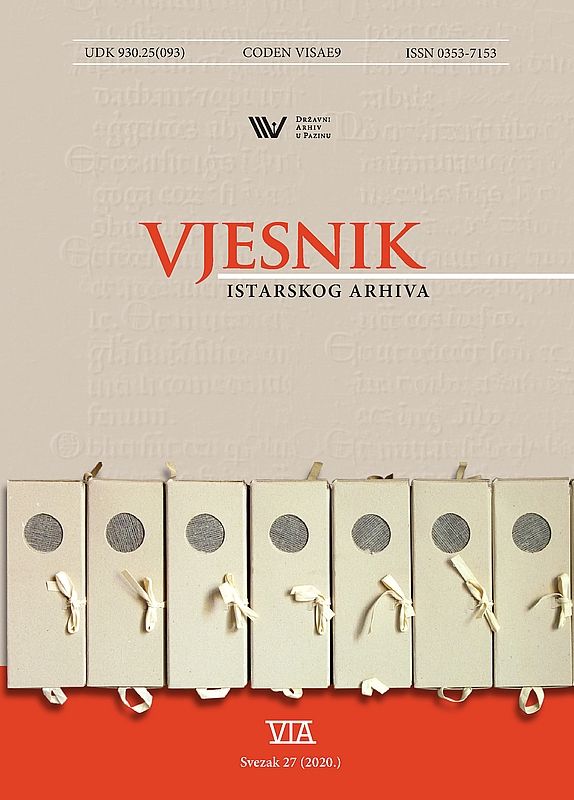Photographing in oblique light of the miniatures contained in the Statute of the City of Pula from 1500
DOI:
https://doi.org/10.31726/via.27.1Keywords:
Statute of the City of Pula, 1500, illumination, raking light, nondestructive diagnostics, observation, conservationAbstract
The first step before the restoration work on the Statute of the City of Pula from 1500 comprised of visual identification, which provided basic information about the colour, surface layer, degradation and methods of creation of the work. After the initial observation of the Statute under direct light, the illumination was shot in raking light in order to obtain further information on its condition. This shooting technique enables better visibility of the surface structure of illuminated images of the crucifix (23.5x17 cm) framed in a floral frame that takes the entire area of folio 6v, stylized letter D and floral frame on folio 7r and seven other decorated initials on folios: 8r (II), 9r (III), 41r (XXXVI), 50r (XLV), 60r (LXV), 89r (LXXXIIII) and 93r (LXXXXVIII). After taking a set of photographs of the illumination under raking light, the identification of the pigments used to make the miniatures and ink was also performed. Discoloration of azurite, malachite and cobalt pigments was identified, which is the basic diagnosis pointing to the need to stabilize these pigments through restoration and conservation. The reconstruction of the painted part is not advisable due to the damage to the parchment and the excessive intrusion into the originality of the illumination, since the area showing lack of paint is large. Due to the difficulty in describing such complex mechanical damage, it has been proven that a photograph is an irreplaceable document that can provide insight into the condition of the miniatures at the time of shooting/photographing.
Downloads
Published
Issue
Section
License

This work is licensed under a Creative Commons Attribution-NonCommercial 4.0 International License.

